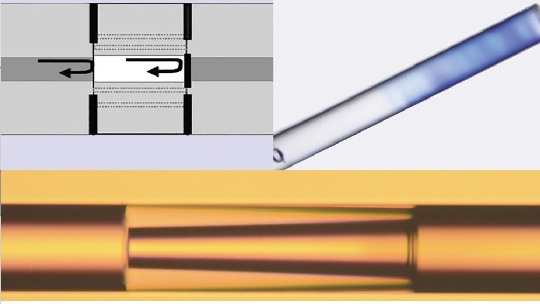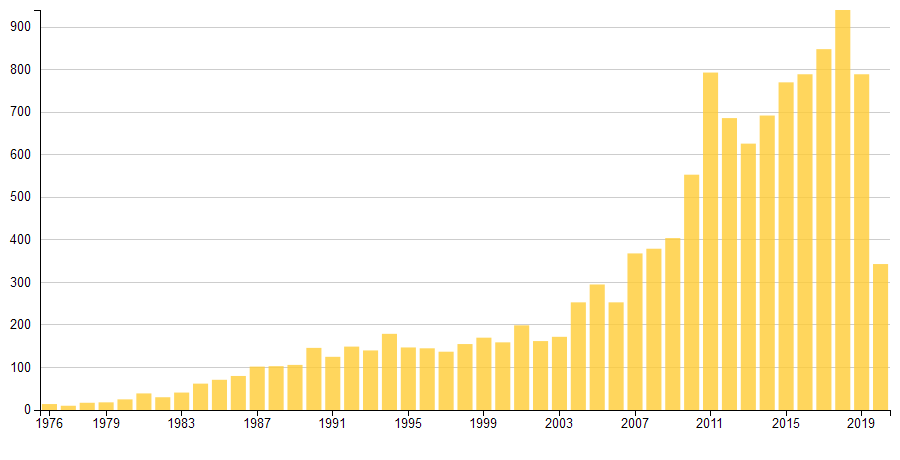
A fiber optic sensor is a sensor that uses optical fiber either as the sensing element (intrinsic sensors), or as a means of relaying signals from a remote sensor to the electronics that process the signals (extrinsic sensors). Fibers have many uses in remote sensing. Depending on the application, fiber may be used because of its small size, or the fact that no electrical power is needed at the remote location, or because many sensors can be multiplexed along the length of a fiber by using different wavelengths of light for each sensor, or by sensing the time delay as light passes along the fiber through each sensor. Time delay can be determined using a device such as an optical time-domain reflectometer.
Fiber optics, though used extensively in the modern world, is a fairly simple and old technology.
Guiding of light by refraction, the principle that makes fiber optics possible, was first demonstrated by Daniel Colladon and Jacques Babinet in Paris in the early 1840s. John Tyndall included a demonstration of it in his public lectures in London a dozen years later.
It was in the year 1956 that Kapany first officially introduced the term “fiber optics”. He defined fiber optics as the art of the active and passive guidance of light, in the ultraviolet, visible, and infrared regions of the spectrum, along transparent fibers through predetermined paths. Since then, fiber optics has been used in various photo-electronics devices, data processing, and photocopying systems. Today, optical fibers are primary components of global and local telecommunication systems. The primary method of transmitting information via optical fiber is digitally, that is, by sequences of optical pulses whose positions, widths, or occurrences can be modulated. The invention of the laser in 1962 immediately stimulated a revolution that designers created fiber optic sensors combining optical fibers and optoelectronic devices with the application of this coherent light source. Fiber optic sensors are attractive because they offer excellent sensitivity and dynamic range, compatibility with optical data transmission and processing, long lifetimes and potential, low cost and high reliability. They are immune to electromagnetic interference. Fiber optic sensors can also work in other hostile environments, where there may be high temperatures, high-voltage, corrosive materials, all-solid-state configurations, vibration and explosion hazards, and where traditional sensors and transducers do not work well. The lightweight and small sizes of these devices are critical in such areas as aerospace and provide substantial advantages to many products. The comparable low cost is another advantage of fiber optic sensors. With each new successful product the cost of existing and newly introduced components continues to drop, opening the door for new waves of fiber sensor products. These developments include the replacement of conventional spinning mass-inertial sensors with fiber optic gyros, widespread use of fiber optic sensors in process control and manufacturing, electrical isolation of patients in medicine, and fiber optic health monitoring systems in the aerospace and construction industries.

The patent publication trend in the form of a bar graph shows activity from middle 1970’s, although the number of filings remained relatively low all the way up till the year
2000. From 2001, which saw a jump to 200 patents published, there was increase in number of
publications from 2007 which saw more than 350 patents. It’s clear the current activity around these technologies is likely to continue seeing more innovation in the near future.






